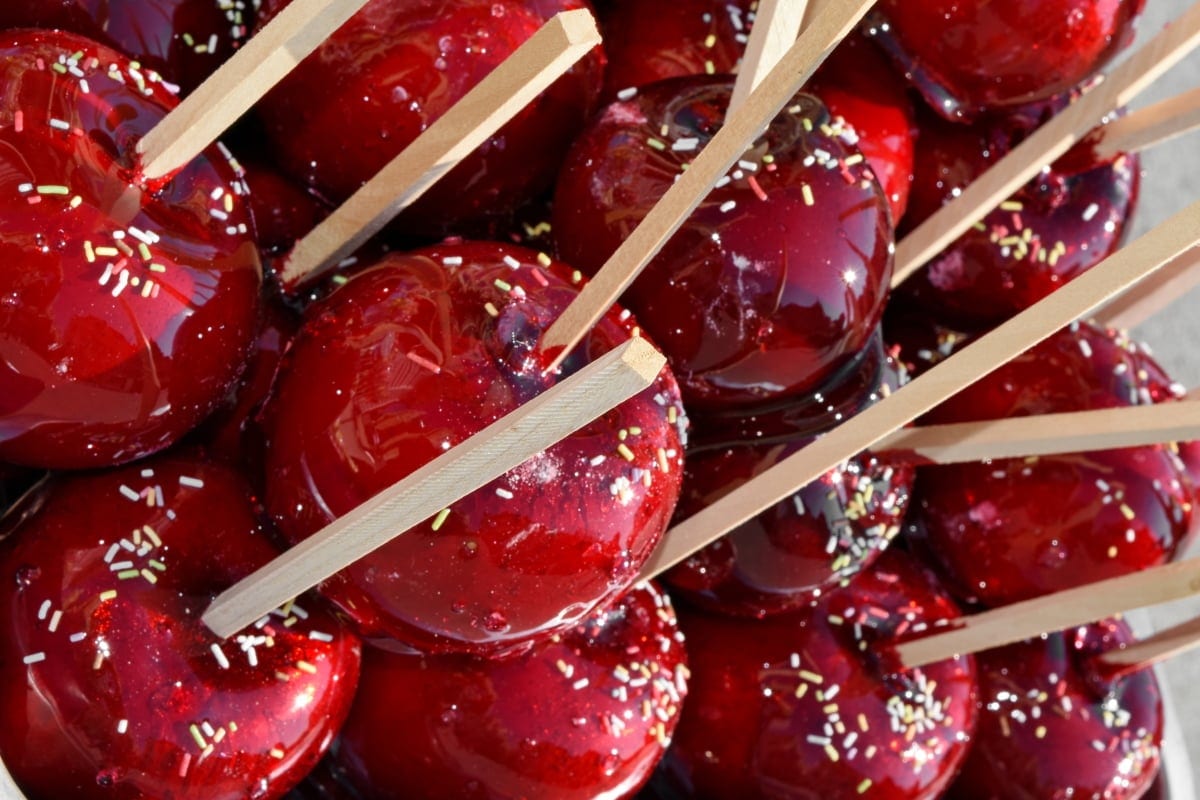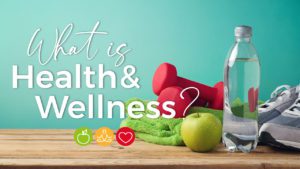In this article you’re going to learn what red 40 is, how it’s made, whether it’s toxic, allergy considerations, what foods it’s in, how to check, whether it’s vegan and so much more. You can use the contents menu to quickly navigate to a section if you’re in a hurry.
On a typical day, you might eat smoked pork smothered in barbeque sauce, crunch on a dill pickle, savor some chocolate pudding, and then wash it all down with a brightly colored soda.
While these foods all seem pretty different, one thing they have in common is that they all are likely to contain red dye #40. You might have heard of this common color dye before, but what is it and why should you care?
What is Red Dye #40 (a.k.a. Red 40)?
Allura red is a lab-manufactured dye that’s used as a colorant in food, cosmetics, over-the-counter medicines, and even prescription drugs. It’s what creates the bright red color in sodas, sauces, and cherry-flavored cough syrups. It’s often the red used to color cosmetics and other items used on the skin, as well.
You won’t just find it in red-colored products, though. This food coloring is used to add color to pickles, chocolate pudding, flavored chips, and many other treats. The red food dye can mix with other colors to create specific effects, so the only way to find out if something contains Red 40 is to read the label.
The tricky thing with labels is that these food additives aren’t always listed with the same terms. Here are a few of the names for red food dye that you might find in the ingredients.
- Red 40
- Red No. 40
- Red #40
- Allura Red
- Allura Red AC
- FD&C Red No. 40
- FD and C Red No. 40
- C. I. 16035
- C.I. Food Red 17
You might also come across the name red 40 lake or red 40 aluminum lake. A lake is a slightly different chemical preparation from food dye and is non-water soluble. A chemical compound (in this case, aluminum hydroxide) is mixed with the dye base.
Red food dye lake is what is commonly used for things like cosmetics, red medicine coatings, candy coatings, and other solids.
Labeling Rules for the US and EU
Both the Food and Drug Administration in the United States and the European Union require that artificial dyes be listed on the labels of products.
In Europe, the EU allows the dye to be used in food but individual countries are allowed to ban it and several EU countries have done so, citing safety issues.
Additionally, the EU requires a warning to be printed on labels of foods that contain the dye, cautioning that the food may cause hyperactivity issues.
In the US companies aren’t required to warn the consumer about any adverse health risks.
In the US, the names of food dyes are required on food labels but companies aren’t required to reveal how much of the red dye is in the food or warn the consumer about any adverse health risks.
How is it Made?
While it’s quite clear that this red additive is a man-made substance, it’s not obvious how it is made or what’s in it.
Originally, the dye was produced from coal tar, but is now created from petroleum mixed with a cocktail of chemicals that aren’t good for humans, animals, or the environment.
It is a highly refined and artificial substance that does not naturally occur in the environment anywhere. It was created to replace other types of red dyes that had serious health consequences.
While manufacturers of the dye say it is safe, there are studies which show that, while red 40 solved some problems, there may be different health consequences to having it inside of our food and drugs.
You can bet that if a processed food or skin product is red it probably contains fd&c red 40. Even if the food isn’t red, it may still contain red dye 40 since the dye is often mixed with other color dyes to make non-red foods more appealing.
Is FD&C Red 40 Toxic?
Despite artificial coloring being approved by the FDA for use in foods, scientific and anecdotal evidence suggests a high degree of danger. The chemicals that go into making it — like benzidine, 4-aminobiphenyl, and p-Cresidine — suggest that the dye is a potential carcinogen. They are being studied more closely to better understand these risks to both children and adults.
The Center for Science in the Public Interest (CSPI), a consumer advocacy organization focused on science-based food and health regulation, has been advocating for the removal of these common artificial color additives from the food industry. You can read more about their extensive research into the potential impacts of this chemically-laden substance in their report Food Dyes: A Rainbow of Risks.
Side Effects of Red 40
Common side effects reported by consumers, parents, medical professionals, and others include:
- Allergic reactions, such as hives, rashes, swelling around the mouth, and others
- Hyperactivity in children (with or without ADD or ADHD)
- Hyperactivity in adults (with or without ADD or ADHD)
- Learning impairments
- Aggressiveness
- Irritability
- Other behavioral disorders
- Headaches and migraines
- Dizziness, nausea, and vomiting
Allergy Considerations
An allergic reactions to red 40 can be a serious and sometimes life-threatening situation. Several individuals have or develop allergies to synthetic dyes and these allergies to artificial food dyes can have several symptoms and health effects.
For some, it’s immediately obvious that they are allergic to the dye. For others, the allergy may develop over the course of years and initially manifest as headaches or general irritability and then becoming a more serious health concern.
Symptoms
It’s a good idea to visit your doctor for treatment if these symptoms appear or if your children exhibit them. Symptoms of mild and serious allergic reactions to red 40 (and other related food dyes) include:
- Itchy skin
- Hives
- Itchy mouth, throat, lips, and/or tongue
- Headaches
- Skin flushing
- Throat swelling and tightening
- Feeling unable to breathe properly
- Any swelling in the face, lips, or mouth
- Feeling dizzy or like you might faint
- Tightness in the chest
- Racing heartbeat
- Lowered blood pressure
Sometimes, it can be difficult for medical practitioners to determine if an allergic reaction is due to food dyes and coloring or if it is due to another ingredient. With these cases, some people may need to undergo several allergy tests to seek proper medical treatment for their symptoms.
Red Dye and Pregnancy
Pregnancy is a special time and what you eat is vitally important to your baby’s proper development. It’s possible that artificial red dye could cause chromosomal damage to a fetus’ DNA and cause issues with overall development. One study on red dye found that it caused DNA damage when given to lab mice. Additionally, another study on rats showed that it lowered reproductive success and created significant issues for fetal and maternal rats.
The azo dye has been found to trigger hyperactivity (e.g. adhd) and cause struggles with IQ in children. A baby could have more issues at birth than they normally would have by being exposed to these potential risks during the developmental phases of pregnancy.
Foods with Red Dye

Many common foods on supermarket shelves contain red no. 40. Since new products are popping up regularly, to completely avoid the substance, be sure to read labels.
Here’s a list of foods containing red dye 40 to be aware of while shopping.
- Prepared cake frostings, even those that appear white
- Canned cherries, including pie filling cherries and maraschino cherries
- Chocolate puddings
- Sugary and sugar-free gelatin snacks (Jello, etc.)
- Dried fruit
- Pie crusts, take and bake pastries, cake mixes
- Wide range of candies – from hard peppermints to soft candies like taffy
- Cinnamon candies and breath mints
- Chocolate, especially candy-coated
- Bubble, cinnamon, cherry, and other flavored gum
- Breakfast cereals, especially those that are brightly colored
- Ice cream and yogurt
- Sodas (including orange soda), sports drinks, punch, drink mixes, lemonade, grapefruit juice, iced tea
- Barbeque sauce, bullion cubes, pasta mixes, spice mixes, salad dressings
- Cookies, popsicles, cheese-flavored tortilla chips, fruit snacks, toaster pastries, chocolate syrup, cereal bars, and other snack foods
You’ll also find the artificial colorant in these non-food products used on the skin.
- Lipstick
- Eye shadow
- Foundation
- Mascara
- Eyeliner
- Lotion
- Mouthwash
- Shampoo and conditioner
- Toothpaste
- Tattoo inks
As you can see, this dye is used in many things that the general population uses regularly. It’s important to become aware of the places it might be hiding and take the time to read labels before purchasing products.
Checking Labels for Red 40 and Other Food Additives
The back of food packaging contains a section for nutrition information which is typically near the ingredients list. It can be very helpful to learn how to read the nutrition information panel, including which essential nutrients the products contain and ratios to be careful of, such as the amount of sugar in the product.
But when it comes to looking for red food dye in a tasty treat, you’ll want to head straight to the ingredients list. This might be located right under the nutrition info panel, it could be to the side, or it might be in another creative spot. If the food comes in a box, it could be on the side or on the back. The FDA requires that companies include a detailed list of what is in their food, so it will be there – keep looking!
You’ll typically see artificial food colorings listed at the end of the list of ingredients. They go by lots of different names — see our list above for a number of possibilities for red dye no. 40.
A Bit about Carmine
You might come across the name carmine looking at ingredients on various products. It’s easy to confuse all the different dyes that are used in products, but carmine and red 40 aren’t the same thing.
Carmine is made from the dried and crushed bodies of female insects known as cochineal. You might also see it listed on the label as cochineal, cochineal extract, crimson lake, carmine lake, or natural red 4.
While it is a highly processed product, it comes from a natural source. Red 40 coloring, on the other hand, comes from petroleum and is a by-product of the oil industry.
Is Red 40 Vegan?
This question is a common one once a consumer realizes that some food dyes come from crushed insects, as in the carmine example above. The short answer to this question is yes, red 40 is vegan.
However, products containing red 40 and the isolated dye itself are commonly tested on lab animals. Looking at things this way, artificial food coloring isn’t cruelty-free and so can’t be considered vegan-friendly at all.
If you’re vegan, it would be best to steer clear of this food dye and opt for food dyes extracted from vegetables and other natural, vegan sources such as purple sweet potatoes and turmeric.
Being a Conscious Consumer
If the idea of eating red dye or slathering it on your skin makes you feel uncomfortable, you’re not alone. The public is becoming more aware of what ingredients go into their foods and products and how these substances might negatively impact their health. It’s important to not assume that the food industry has your best interest in mind. You can empower yourself, your family, friends, and neighbors to learn more about artificial colors and become more conscious consumers.
Start with checking food labels, then continue to creating an all-around toxin-free lifestyle to the best of your ability. This includes eating fresh, organic food. It also means shopping at your local farmer’s markets and beginning to ask questions about what’s in your food.
While it is frustrating that the food industry is more profit driven and less ethical than they should be, the change begins with you and your eating choices. When we are empowered, our spending shifts. By spending our hard earned dollars on ethical and toxin-free food products, we show the food industry what we expect.
















